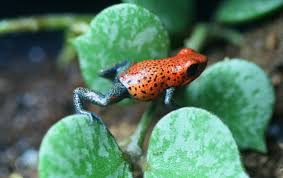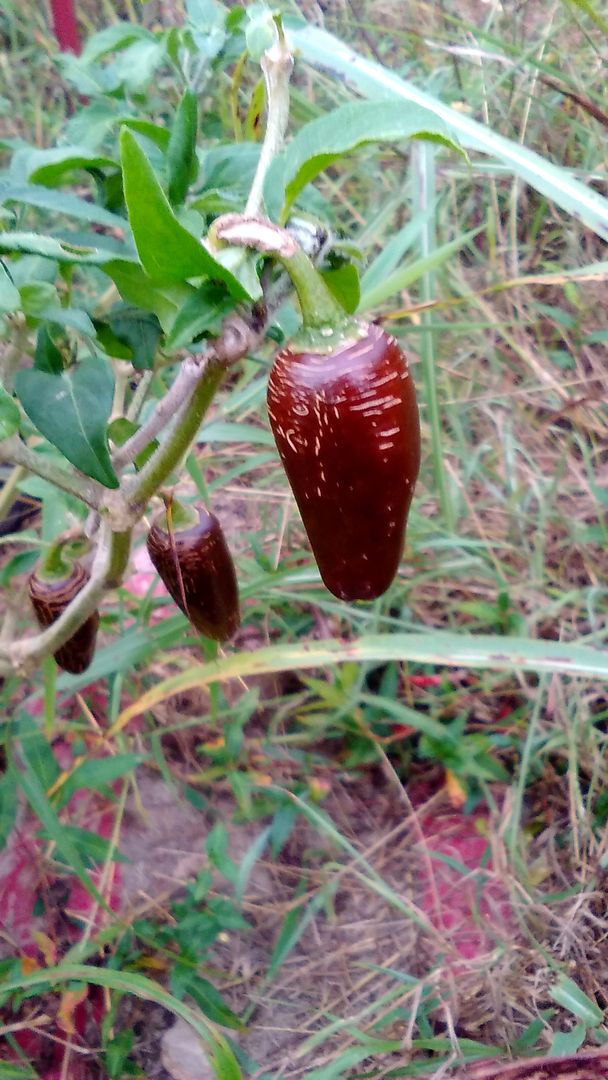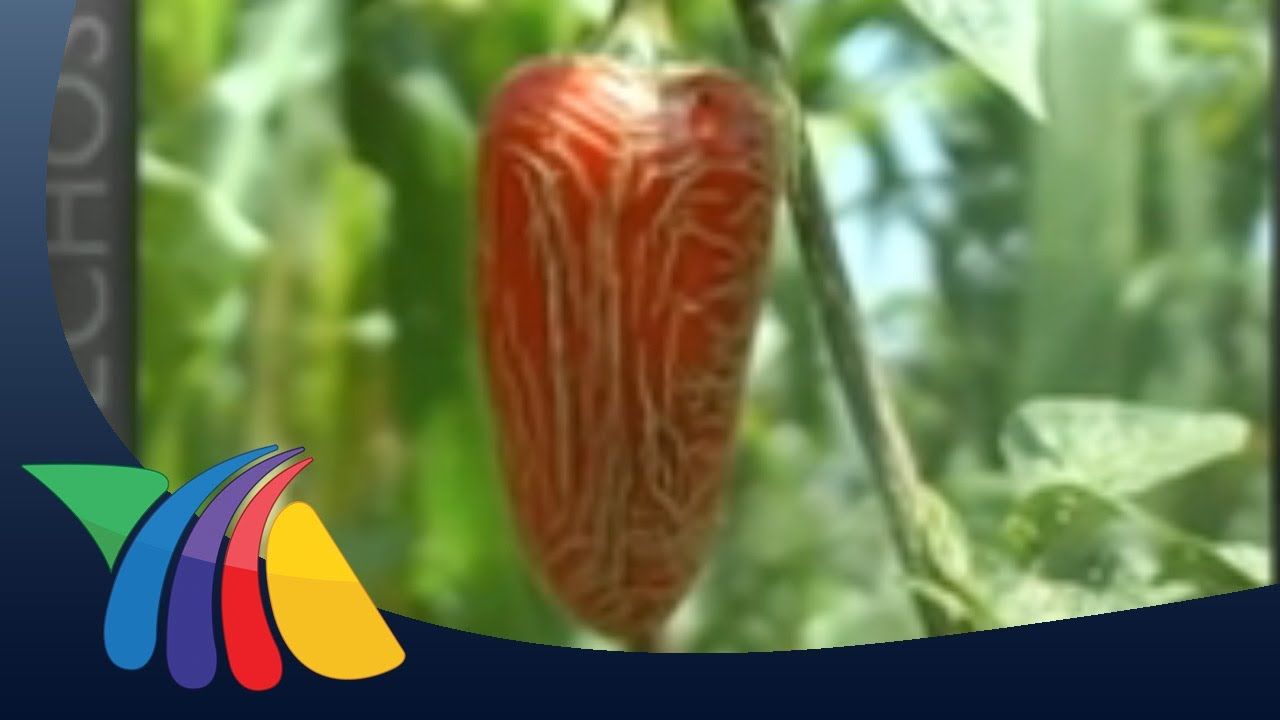-
Do you need help identifying a 🌶️?
Is your plant suffering from an unknown issue? 🤧
Then ask in Identification and Diagnosis. -
✅ Expert and friendly hot pepper grow advice.
✅ The latest information on hot pepper varieties.
✅ Reliable seed trading.
✅ Hot sauce recipes and food safety guidance.
✅ Hot sauce business tips for startups.
🌶️ And more!
It's all here, at The Hot Pepper! The Internet's original hot pepper community! Est. 2004.
You are using an out of date browser. It may not display this or other websites correctly.
You should upgrade or use an alternative browser.
You should upgrade or use an alternative browser.
drying-smoking Chili Rayado from La Misión in the state of Hidalgo
- Thread starter D3monic
- Start date
Will see if any seeds germinate, maybe someone can do a side by side with the farmers and this one. Always nice to have a locale for cultivars though.
When I collected poison dart frogs it was always a big deal to know the collection sites ect.
I had one pair that I had the exact GPS coordinates the parents were collected from on isla san cristobal.

When I collected poison dart frogs it was always a big deal to know the collection sites ect.
I had one pair that I had the exact GPS coordinates the parents were collected from on isla san cristobal.

Wait. What? You collected poison dart frogs?? You MUST tell us more.D3monic said:When I collected poison dart frogs it was always a big deal to know the collection sites ect.
I had one pair that I had the exact GPS coordinates the parents were collected from on isla san cristobal.

Muckyai said:Wait. What? You collected poison dart frogs?? You MUST tell us more.
I used to have a large dart frog collection. Used to have extensive threads in forums but thanks to photobuckets hijacking of peoples pictures they aren't visible any more. My entire living room was frog tanks, I breed them and sold tadpoles ect. Some of the frogs in my collection cost as much as $250 each and average was only $60-120 each
In situations like this one, I always like to consult the most researched, and scientific answers from the country of origin. This is the reason I referenced a book that is written by a Mexican, in Spanish, in Mexico, about Mexican chiles. The only reason that I think that the chile rayado probably is the farmers market jala, is because the books description of the plant growth and foliage, pod size, striation/corking, etc., exactly matches what I grew last Summer as a farmers market jalapeño. I luckily speak, read, and write 100% fluently in Spanish, so I have the ability to research articles about ajis/chiles/rocotos, that are written in Spanish, from their country of origin.
There is a ton of misinformation on the web, so that's why I like to hit the books.
Once again, here is a picture of page 32 of this book about all Mexican chiles.
https://www.researchgate.net/publication/235657255_Los_chiles_de_Mexico_y_su_distribucion
Right next to the title of the entry about the chile rayado, is a picture of a fully corked chile rayado. Here is a pic of some farmers market jalas I grew last year.
They look literally identical to the picture provided in this section of the book about the chile rayado.
There is a ton of misinformation on the web, so that's why I like to hit the books.
Once again, here is a picture of page 32 of this book about all Mexican chiles.
https://www.researchgate.net/publication/235657255_Los_chiles_de_Mexico_y_su_distribucion
Right next to the title of the entry about the chile rayado, is a picture of a fully corked chile rayado. Here is a pic of some farmers market jalas I grew last year.
They look literally identical to the picture provided in this section of the book about the chile rayado.
Attachments
Is it possible that the same name is used to describe a number of different chillies? There may be different strains named 'chilli Rayado' depending which region or village. Especially if the name actually describes the look because there are plenty of Jalapeño strains that match the description.
Absolutely! In those cases the pepper would be described as "un chile rayado", which means a striped/lined chile. The term rayado in this case is used an adjective to describe a physical characteristic of the pepper, and could be used to describe literally any type of chile in the world that has stripes/lines.Jase4224 said:Is it possible that the same name is used to describe a number of different chillies? There may be different strains named 'chilli Rayado' depending which region or village. Especially if the name actually describes the look because there are plenty of Jalapeño strains that match the description.
The term "el chile rayado" means the striped chile. Rayado is used as both an adjective and a noun, which both describe physical characteristic of the pepper, but also tells you exactly what cultivar you are talking about.
Another example of this would be "el aji amarillo". That always refers to a very specific baccatum variety of aji that is grown in Peru. Once again, in this case it is used as both an adjective to describe a characteristic of the pepper, but also as a noun to describe one specific cultivar, out of literally hundreds of Peruvian cultivars.
If you were to say "un aji amarillo" for example, you could be describing literally any yellow aji cultivar, because you are using "amarillo" as an adjective only.
Here is a picture of the rayado that my friend grows
And how he got them

I searched for this seed for over 6 years, without success. This was because it is rarely sold fresh. The norm is to smoke it. I often visited in the region it was grown. But I wasn't able to be present when they harvested, and never got around to asking to go out to the field to pick some fruit. I asked for seed. But folk always agreed and then forgot. The farmers didn't save their own seed. They had organized a pretty good sized cooperative for the production of this pepper. I was told that some years earlier, chefs from Germany learned of this pepper and asked to buy it in large quantities. The problem was, that the individual growers couldn't produce amount that the Germans considered the minimum amount to make it worth their while. So, someone organized a co-op. They had growers and someone was selected to produce the transplants. Hence, none of my friends had seed on hand when I looked. We left Mexico in 2001 and I stopped looking.
However, every year until 2010, I would return and teach in the Bible Institute, where we had served. One year (might have been around 2009) the students in one of my classes figured out that I REALLY like seeds. Some of them went home over the weekend, and when we gathered for the next module, a number of them presented me with gifts of seed from their villages. Among the gifts was an orange sized bag of Chile Rayado seed! I've grown it ever since, saving my own seed.
Can I share your picture
sure, go ahead. There is variation in between some Chile Rayados in flavor and heat. But I'm pretty sure that almost any Rayado is hotter than almost any jalapeño. I normally describe Chile Rayado as a "Jalapeño type." They're similar but not the same.
Just as an example. I've dropped 1 (one) dried Rayado in a crockpot of stew and had my wife and daughter say they can't eat it, as it's too hot. I really doubt that one chipotle would do that.
Also, where we last lived in Mexico (Ixmiquilpan, Hidalgo) they sold chipotle in the grocery stores and smoked Chile Rayado in the market. I never heard anyone interchange the names.
Incidentally, the quality of the Chile Rayado varied, in part due to its growing conditions. Most all Chile Rayado was grown in mountainous terrain. Some were grown on East facing slopes and some on West facing slopes. I was told that those which grew on a West facing slope, and caught the afternoon sun, which was hottest, were the peppers with the most heat and best flavor. Though from the same seed, the different growing conditions even made the peppers grow slightly differently. A truly experienced eye could pick out which was which, from a mixed pile.
In the Ixmiquilpan market, vendors would purchase both quality peppers and then mix them, selling little piles for a higher price than they'd otherwise get, as they treated them as if they were all the higher quality pepper. Most consumers couldn't tell. One of my son's friends could tell. He'd make the vendors mad because he'd sort the best Rayados from a couple of piles and pay the "price per pile."
It's my theory that NE Oklahoma is very much to this pepper's liking. Though we don't claim to be connoisseurs, we really believe that our dried Rayados are truly excellent. They are REALLY hot too!
And how he got them

I searched for this seed for over 6 years, without success. This was because it is rarely sold fresh. The norm is to smoke it. I often visited in the region it was grown. But I wasn't able to be present when they harvested, and never got around to asking to go out to the field to pick some fruit. I asked for seed. But folk always agreed and then forgot. The farmers didn't save their own seed. They had organized a pretty good sized cooperative for the production of this pepper. I was told that some years earlier, chefs from Germany learned of this pepper and asked to buy it in large quantities. The problem was, that the individual growers couldn't produce amount that the Germans considered the minimum amount to make it worth their while. So, someone organized a co-op. They had growers and someone was selected to produce the transplants. Hence, none of my friends had seed on hand when I looked. We left Mexico in 2001 and I stopped looking.
However, every year until 2010, I would return and teach in the Bible Institute, where we had served. One year (might have been around 2009) the students in one of my classes figured out that I REALLY like seeds. Some of them went home over the weekend, and when we gathered for the next module, a number of them presented me with gifts of seed from their villages. Among the gifts was an orange sized bag of Chile Rayado seed! I've grown it ever since, saving my own seed.
Can I share your picture
sure, go ahead. There is variation in between some Chile Rayados in flavor and heat. But I'm pretty sure that almost any Rayado is hotter than almost any jalapeño. I normally describe Chile Rayado as a "Jalapeño type." They're similar but not the same.
Just as an example. I've dropped 1 (one) dried Rayado in a crockpot of stew and had my wife and daughter say they can't eat it, as it's too hot. I really doubt that one chipotle would do that.
Also, where we last lived in Mexico (Ixmiquilpan, Hidalgo) they sold chipotle in the grocery stores and smoked Chile Rayado in the market. I never heard anyone interchange the names.
Incidentally, the quality of the Chile Rayado varied, in part due to its growing conditions. Most all Chile Rayado was grown in mountainous terrain. Some were grown on East facing slopes and some on West facing slopes. I was told that those which grew on a West facing slope, and caught the afternoon sun, which was hottest, were the peppers with the most heat and best flavor. Though from the same seed, the different growing conditions even made the peppers grow slightly differently. A truly experienced eye could pick out which was which, from a mixed pile.
In the Ixmiquilpan market, vendors would purchase both quality peppers and then mix them, selling little piles for a higher price than they'd otherwise get, as they treated them as if they were all the higher quality pepper. Most consumers couldn't tell. One of my son's friends could tell. He'd make the vendors mad because he'd sort the best Rayados from a couple of piles and pay the "price per pile."
It's my theory that NE Oklahoma is very much to this pepper's liking. Though we don't claim to be connoisseurs, we really believe that our dried Rayados are truly excellent. They are REALLY hot too!
D3monic
La Mision is 82 miles from where my friend lived when in Mexico and some of his students went home for the weekend and returned with seeds for him
82 miles is not that far away if the students road a bus there and back most of the drive is on mexico 85
So maybe my friends rayado is the same as your friend
My friend also said he tried sprouting seeds from the smoked pepper and could not get them to sprout
I told him I was going to save seed from it he was happy he thinks its a pepper that should be shared
La Mision is 82 miles from where my friend lived when in Mexico and some of his students went home for the weekend and returned with seeds for him
82 miles is not that far away if the students road a bus there and back most of the drive is on mexico 85
So maybe my friends rayado is the same as your friend
My friend also said he tried sprouting seeds from the smoked pepper and could not get them to sprout
I told him I was going to save seed from it he was happy he thinks its a pepper that should be shared
Interesting 1/4 of the green peppers grown in mexico are grown in this area
Here is pic of pepper in mexico on youtube but the video is not setup to play in the usa
Here is 4 in spanish thats on the site
Este chile se produce en las montañas de la sierra de Hidalgo, es una variedad del jalapeño, pero este es mucho más picoso.
Notice the leaves are very much the same as in my friends picture

Here is 4 in spanish thats on the site
Este chile se produce en las montañas de la sierra de Hidalgo, es una variedad del jalapeño, pero este es mucho más picoso.
Notice the leaves are very much the same as in my friends picture

Heres some more from my friend oh his rayado pepper La Mision is a couple of hours from where he lived
When our family lived in Mexico we became very fond of a jalepeño type, grown in an area of the Eastern hill country called the Huesteca. This pepper was known as Chile Rayado (translated: streaked pepper). This jalepeño type was a bit larger than most jalepeños and hotter. Typically, it was smoked and dried. We would purchase it in the market. Wow! What a wonderful hot sauce it made! Several years before we left Mexico I started trying to get some seed to Rayado. It wasn't easy. Most of the people I knew, who grew it, lived a couple of hours from me and got their plants from a collective. Each time I asked about seed they had already smoked their harvest and had none. How sad! They were dependent upon a supplier for each year's planting!
When our family lived in Mexico we became very fond of a jalepeño type, grown in an area of the Eastern hill country called the Huesteca. This pepper was known as Chile Rayado (translated: streaked pepper). This jalepeño type was a bit larger than most jalepeños and hotter. Typically, it was smoked and dried. We would purchase it in the market. Wow! What a wonderful hot sauce it made! Several years before we left Mexico I started trying to get some seed to Rayado. It wasn't easy. Most of the people I knew, who grew it, lived a couple of hours from me and got their plants from a collective. Each time I asked about seed they had already smoked their harvest and had none. How sad! They were dependent upon a supplier for each year's planting!
mpicante said:Very interesting thread.This sounds like one nice pepper.Does anyone on here have seeds?Willing to buy or trade.
I got a bunch soaking, doubt they are viable. If they are I will gladly share seeds.



